Understand The Past To Understand The Present
To understand the present, it is often important to understand the past first. The separation of time helps us accept truths we would otherwise reject if applied to individuals currently in power, to whom we have an emotional attachment.
It’s a sad fact that while individuals are in power, it is difficult for us to see who they really are because of false dichotomies we are fed. The immediacy of our time and money spent to get them elected leads us to make excuses that we no longer feel a need to make once they have left office.
We hope that if we can understand the realities behind those we once thought of as heroes, we will be able to be more objective about those currently in power and support principles of liberty above the personalities of the moment.
As you read about who Ronald Reagan really was, as opposed to the character the conspiracy-controlled media (supposed left and right) painted him as, we will be able to ask ourselves if it applies to current people in power without the emotional triggers that normally come with such questions.
The Election of 1980
By early 1980, the Trilateral Commission and the Council on Foreign Relations, the two most recognizable Insider organizations, had become quite the buzz. (Check out these two links to learn more about these globalist institutions here and here.) These groups were now hot topics on the campaign trail. Voters across the nation, especially those fed up with the Carter administration, started looking for candidates who weren’t linked to either of these groups.

Take New Hampshire, for example, where the first presidential primary happens every fourth February. Most Republican candidates were quick to assure voters that they were “not now and never have been” members of David Rockefeller’s Trilateral Commission or his Council on Foreign Relations. However, Republican candidates George Bush and John Anderson couldn’t make such claims, as they had ties to both of these elite organizations.
This wasn’t just a New Hampshire thing; it was happening all over the country. Take a look at a February 8, 1980 article in the New York Times (“Reagan Steps Up Attack on Carter’s Foreign Policy,” New York Times, February 8, 1980.). It covered Ronald Reagan’s campaign trip through the South during the first week of February. Reagan went after President Carter’s foreign policy, pointing out that “19 key members of the Administration are or have been members of the Trilateral Commission.” When Reagan was asked to back up his claim, an aide listed names like President Carter, Vice President Mondale, Secretary of State Vance, Secretary of Defense Brown, and fifteen other Carter officials.
The report also mentioned that Reagan advisor Edwin Meese told reporters that “all of these people come out of an international economic-industrial organization with a pattern of thinking on world affairs.” He made an interesting point about how their influence led to a “softening” of the nation’s defense capability. Both he and Reagan could have added that nearly all of these Carter administration officials were also members of the Council on Foreign Relations, but they chose not to.
Anti-Elitist Reversals
History shows that Ronald Reagan played this issue like a pro. On February 26th, in New Hampshire, where it became the deciding factor in the primary, voters handed him a landslide victory. His strong performance and George Bush’s weak showing thrilled conservatives across the nation and set the stage for future wins that ultimately took Reagan all the way to the White House.
But something else happened on February 26, 1980, that should’ve raised more eyebrows. On the very day Ronald Reagan won the nation’s first primary, he swapped out his campaign manager for William J. Casey, a longtime member of the Council on Foreign Relations. Casey took over as Reagan’s campaign manager for the rest of the campaign and was later rewarded with an appointment as Director of the CIA.

Choosing William J. Casey as campaign manager was a big deal. He’s a New York lawyer who held several positions in the Nixon administration, including Under Secretary of State for Economic Affairs and Chairman of the Export-Import Bank. In those roles, he became known for pushing U.S. taxpayer-financed aid and trade with communist nations.
During this time, while working as a State Department official, Casey publicly stated in Garden City, New York, that he supported U.S. policies promoting interdependence among nations, even at the cost of sacrificing our nation’s independence (“The Reshaping of the World Economy,” an address by Acting Secretary of State William J. Casey at Adelphi University, March 3, 1974). These views aligned perfectly with the long-term goals of the Conspiracy, but they didn’t match Reagan’s public stance. However, not many people noticed Casey’s appointment because few knew much about him.
With CFR member William J. Casey on board, the Reagan campaign kept the spotlight on the Trilateral Commission and George Bush’s connections to it. However, they didn’t mention the older, larger, and more influential Council on Foreign Relations.
Rockefeller Ties
In April 1980, Reagan told the Christian Science Monitor (Kevin Phillips, “The Strange Tale of How Ronald Reagan Sold Out to the Trilateralist-tinged Republican Establishment,” Los Angeles Herald Examiner, August 4, 1980.) that he would steer clear of David Rockefeller’s Trilateral Commission. But George Bush, who had just resigned from both the Trilateral Commission and the Council on Foreign Relations board, couldn’t shake off the stigma of his Insider ties.
In Florida, awareness of the Trilateral Commission sparked a political ad that claimed, “The same people who gave you Jimmy Carter now want to give you George Bush.” (Newsweek, March 24, 1980) The same ad ran in Texas. The Reagan bandwagon, fueled by its attack on the Conspiracy, started racking up primary victories one after another.
Eventually, Ronald Reagan clinched the Republican nomination, much to the delight of conservatives nationwide. But their joy turned to shock when he picked George Bush as his running mate. Bush was the epitome of the Insider Establishment type that had driven many to support Reagan in the first place. That night at the Republican convention, the word “betrayal” was on everyone’s lips.
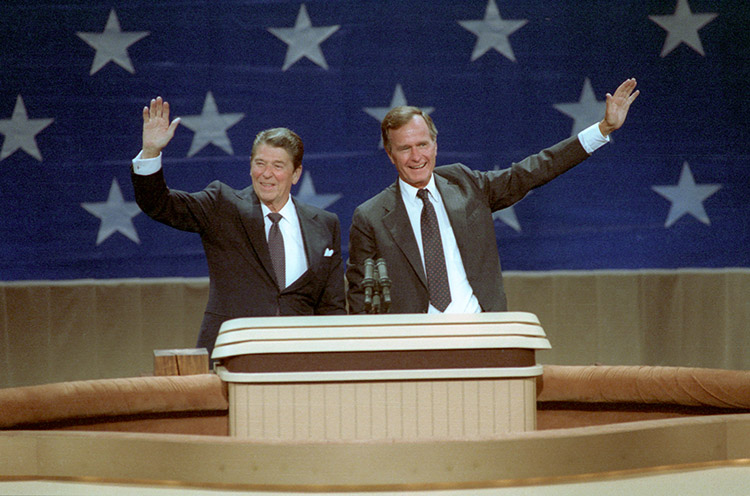
Ronald Reagan had repeatedly promised to pick a running mate who shared his conservative views. But out of all the Republicans available, he chose the man who was the darling of the Rockefellers. The Rockefeller-Bush relationship was no secret.
Campaign finance info had already shown that before December 31, 1979, the Bush for President campaign received individual $1,000 contributions (the highest amount allowed by law) from David Rockefeller, Edwin Rockefeller, Helen Rockefeller, Laurance Rockefeller, Mary Rockefeller, Godfrey Rockefeller, and several other Rockefeller relatives and employees.
Staunch Reagan supporters frantically tried to stop the Bush nomination. But political considerations quickly forced them to go along. One after another, they began to state that their man was still at the top of the ticket. “It was Reagan-Bush, not Bush-Reagan,” they said. But all had to admit that the issue of Trilateral domination of the Carter administration could hardly be used with a Trilateralist veteran like Bush on the ticket.
Once William Casey joined the Reagan team in February, the issue of CFR domination was off the table. And when George Bush was picked as Reagan’s running mate, the Trilateral issue was dead too. Only a few realized that losing those two issues meant losing the hope that future President Reagan would keep Conspirators out of key government positions.
As summer 1980 turned into fall, Conspirators were popping up everywhere in the Reagan campaign. In September, the Reagans hosted a casual “Prelude to Victory” party at their rented East Coast home in Middleburg, Virginia. A photo from the party shows David Rockefeller, the leader of the CFR and the Trilateral Commission, sitting in the place of honor at Reagan’s immediate right. Guests included Dr. Henry Kissinger and other CFR and Trilateral members (W Magazine, September 26, 1980).
Two weeks before the election, the front page of the New York Times featured a photo of the future President campaigning in Cincinnati. Alongside him were his foreign policy advisors, who he said would answer questions for him: Senator Howard Baker, former Ambassador Anne Armstrong, and former Secretaries of State William P. Rogers and Henry Kissinger. All of them were members of either the CFR, the Trilateral Commission, or both (James Reston, “A Day With Reagan,” New York Times, October 27, 1980; also, New York Times, October 21, 1980).
Stacking the Cabinet

Election Day 1980 brought a Reagan landslide. Conservatives, caught up in misguided euphoria, started talking about the return of fiscal and diplomatic sanity to the federal government. But the shock they felt when Reagan chose George Bush as his running mate came back when President-elect Reagan announced his cabinet picks.
For Secretary of State, he chose Alexander Haig, a member of the Council on Foreign Relations. For Secretary of the Treasury, Donald Regan, and for Secretary of Commerce, Malcolm Baldrige—both members of the Council on Foreign Relations. Back in February, Edwin Meese had told reporters that Reagan opposed the Trilateral Commission because its influence led to a “softening of defense.” Yet, he chose Caspar Weinberger, a member of the Trilateral Commission, as his Secretary of Defense. The same Insider team was still in power!
Five months after Reagan was sworn in as President, the Council on Foreign Relations noted in its Annual Report that 257 of its members were serving as U.S. government officials. As in previous administrations, these individuals filled many important Assistant Secretary and Deputy Secretary posts at the State Department, Defense Department, Treasury Department, and so on.
For the crucial post of White House Chief of Staff, Reagan named James Baker III. The White House Chief of Staff determines who gets to see the President, what reading material appears on his desk, and what his policy options might be. But James Baker had fought against Reagan as the campaign manager for George Bush in 1980 and as a campaign staffer for Gerald Ford in 1976. He is a confirmed liberal who opposed the philosophy Reagan espoused during the 1980 campaign. In his White House post, he leads a team of like-minded men who have virtually isolated the President from the many conservatives who supported his election bid.
Policy Reversals
As President, Reagan was portrayed as a tough anti-communist and a frugal budget-cutter. But those images don’t hold up under close scrutiny. Just one year after taking office, he agreed to a taxpayer-funded bailout of Poland’s debt to large international banks. Even worse, he skirted the law that requires any nation in such financial trouble to be formally declared in default before the U.S. government can assume its debts. This action was even more revealing because it happened while thousands of Polish citizens were being jailed in a typical communist crackdown against even a hint of freedom.
During 1981 and 1982, Reagan personally signed authorizations for the U.S. Export-Import Bank to finance nuclear steam turbines for communist Romania and power generation equipment and a steel plant for communist China (Federal Register, May 29, 1981, Page 28833; Federal Register, September 9, 1982, Page 39655). Tens of millions of U.S. taxpayer dollars were being used to industrialize these Red tyrannies.
Reagan administration officials announced plans to sell arms to Red China, told anti-communist businessmen in El Salvador that the U.S. would oppose efforts by any anti-communist Salvadorans to gain control of their country, and refused to honor a pledge to supply the Free Chinese on Taiwan with the fighter planes they deemed necessary for defense. When the President authorized a joint Peking-Washington communique stating that military support for the Free Chinese was no longer the nation’s “long-term policy,” even CFR member Dan Rather of CBS News called it a startling reversal of Reagan’s frequently stated rhetoric.
On the domestic front, the record of reversals was just as dramatic. When Reagan campaigned against Jimmy Carter, he said he would cut two percent ($13 billion) from the fiscal 1981 budget he would inherit if elected (Televised address of October 24, 1980). He did nothing about that budget and instead went to work immediately on the budget for the following year.
On February 18, 1981, in one of his first speeches as President, Reagan delivered his budget proposals. He said, “It is important to note that we are reducing the rate of increase in taxing and spending. We are not attempting to cut either spending or taxing to a level below that which we presently have.” Yet, America was flooded with propaganda, making everyone believe the Reagan economic package had substantial federal spending cuts. Supposed budget cuts were labeled “massive,” “drastic,” “historic,” and “cruel.” But simple math showed that Reagan’s fiscal 1982 proposal was $40 billion more than the 1981 budget. By the end of fiscal 1982, instead of being reduced as candidate Reagan had promised, spending had grown by $70 billion over 1981, and the deficit soared to $110 billion.

Reagan’s reputation, built on campaign oratory and erroneous descriptions of his economic program, continued to delight conservatives and anger liberals. At a press conference on March 31, 1982, a reporter asked Reagan to respond to the accusation that he cared little for the nation’s poor. Part of his lengthy response included, “Maybe this is the time with all the talk that’s going around to expose once and for all the fairy tale, the myth, that we somehow are, overall, cutting government spending… We’re not gutting the programs for the needy.” He then boasted that federal spending for student loans, welfare, meals, rents, job training, and social security was higher than under Jimmy Carter’s last budget.
The Reagan-led conservative philosophy won decisively in the 1980 elections. Promises to get tough with communists, cut spending, balance the budget, and abolish the Departments of Education and Energy appealed to millions. But there has been no change in the government’s direction. America continues to help communists and harm our nation’s anti-communist friends. Federal spending keeps growing, and deficits are skyrocketing. And the bureaucrats at the Departments of Education and Energy are still in place.
More Reagan Duplicity
At the halfway point of Reagan’s four-year term, the director of the Congressional Budget Office predicted budget deficits in the $150 billion range for the Reagan-directed fiscal years 1982, 1984, and 1985 (The Review Of The News, August 11, 1982). Others thought the deficits would be even higher. The largest deficit in the nation’s history before Reagan was $66 billion during the Ford years. Budget deficits lead to inflation, high interest rates, business slowdowns, higher taxes, and unemployment. If federal spending matched federal revenue, some of these problems would be far less severe.
Shortly after taking office, Reagan pressured conservative senators and congressmen to raise the national debt ceiling. If he had insisted on no further increases, the spiraling growth of government could have been checked. But instead, he used his influence to authorize more debt. He did the same thing again eight months later and again in 1982. As a result, interest on the debt alone grew to $117 billion for fiscal 1982.
In his State of the Union address on January 26, 1982, President Reagan again appealed to conservative Americans when he stated:
“Raising taxes won’t balance the budget. It will encourage more government spending and less private investment. Raising taxes will slow economic growth, reduce production and destroy future jobs …. So, I will not ask you to try to balance the budget on the backs of the American taxpayers. I will seek no tax increases this year.”
But in August 1982, Reagan’s actions once again didn’t match his rhetoric. He used all his influence to get Congress to pass the largest tax increase in our nation’s history—$227 billion over five years. The principled conservatives who had supported his election bid opposed this huge tax increase. The President’s allies on the tax increases included big-spending liberals like Senator Edward Kennedy and Speaker of the House “Tip” O’Neill.
One result of the Reagan administration’s failure to stand by the philosophy that brought Reagan to the White House is that conservatives everywhere have been blamed for the nation’s woes. The congressional elections of 1982 were a significant setback for the entire conservative movement. Many voters thought the conservative program had been tried and found wanting. The truth is that the conservative program has yet to be tried. And the reason it hasn’t been tried is that the Conspirators who surround Reagan are still in control.
Reagan himself provided dramatic evidence of this control in comments he made about the $5.5 billion increase in gasoline taxes he signed into law on January 5, 1983.
At his press conference on September 28, 1982, he was asked:
“Knowing of your great distaste for taxes and tax increases, can you assure the American people now that you will flatly rule out any tax increases, revenue enhancers or specifically an increase in the gasoline tax?”
Mr. Reagan responded:
“Unless there’s a palace coup and I’m overtaken or overthrown, no, I don’t see the necessity for that. I see the necessity for more economies, more reductions in government spending…. “
Less than three months later, Reagan was vigorously promoting the gasoline tax increase. Call it a “palace coup” or whatever, but the chain of events certainly suggests that someone other than the President is in control.
CFR Lineage
When CFR member Alexander Haig resigned as Secretary of State, CFR board member George P. Shultz was immediately named to replace him. During confirmation hearings, several senators and political writers openly worried about what became known as “the Bechtel Connection.” It seemed almost sinister to have Shultz join another former Bechtel Corporation executive, Defense Secretary Caspar Weinberger, in Reagan’s inner circle. But the senators and supposedly hard-nosed reporters were assured there was no cause for alarm, and the matter died.
If a common corporate lineage of these two cabinet officials stirs concern, why is there no concern over the fact that both are current members of the Council on Foreign Relations? And why not even a mention that Shultz would be the tenth Secretary of State in a row to hold CFR membership before or immediately after his tenure?
That the CFR owns the State Department can hardly be denied. But it can be ignored, which is precisely what has been happening in America for decades. The result? Most Americans remain totally unaware that the same powerful Conspirators still control our government.
The Council on Foreign Relations rarely receives any press coverage. When confronted by adversaries, spokesmen for the organization repeatedly insist that it is merely a glorified study group with no positions or stated policy on foreign or domestic affairs. Rather, they insist, the CFR merely offers diverse thinking from important students of world affairs.
Yet, in an unusually frank article about the Council in the New York Times on October 30, 1982, author Richard Bernstein reflected the attitude of the CFR executives he spoke with when he wrote:

“It [the Council] numbers among its achievements much of the country’s post-World War II planning, the basic ideas for reconciliation with China, and the framework for an end to military involvement in Indochina.” (Richard Bernstein, “An Elite Group On U.S. Policy Is Diversifying,” New York Times, October 30, 1982)
If an organization takes no positions and has no stated policies, how can it list “achievements” like shaping some of our government’s most important decisions over the past forty years? And what “achievements” these have been!
Post-World War II planning has seen the United States fall from undisputed world leadership and the admiration of virtually all nations to being militarily threatened by the USSR and despised by almost everyone else. The CFR claims credit for this planning, which has seen the U.S. bumble from defeat to setback to error in judgment, while freedom retreats and the world increasingly falls under communist control.
Reconciliation with China, rather than being an achievement, puts our nation in bed with the world’s most brutal tyranny and makes us adversaries of the friendly, productive, free, and honorable Chinese on Taiwan.
Nor is the disgraceful conclusion to our military involvement in Indochina anything to be proud of. The end saw Laos, Cambodia, and South Vietnam fall to brutal communist tyranny. The toll in human slaughter following our nation’s pullout from Southeast Asia is indescribable. And those who said these nations wouldn’t fall like dominoes are now strangely silent.
It’s significant to see this corroboration of our long-held belief that the CFR helps shape our nation’s policies. The policies noted in Bernstein’s New York Times article have produced communist victories in every case. It’s even more significant to have this admission of the remarkable dovetailing of CFR and communist goals.
Double Jeopardy Elitism
The Trilateral Commission tries to come across as just a high-level discussion group that promotes economic and political cooperation. In 1982, the Commission released “East-West Trade At A Crossroads” and quickly claimed it only reflected the views of its authors (Robert V. Roosa, Armin Gutowski, and Michaya Matsukawa, East-West Trade At A Crossroads (New York: Trilateral Commission, 1982).
This study recommends increasing trade with communist nations, which fuels their military capabilities. Even after noting that the communist bloc nations are already heavily in debt to the West and that previous trade had “produced no significant change in the foreign policy of the Soviet Union,” the study also recommends supplying even more credit to stimulate greater trade. That credit, of course, is to be supplied by America’s taxpayers. This isn’t a departure from previously held positions published by the Commission or enunciated by its members.
What’s most significant is that the recommendations given by this Trilateral Commission report are wholly in tune with the policies of both the U.S. government and the governments of the communist bloc nations. The American people supply the communist nations with equipment, technology, and credit, even while communist troops crush Poland and ravage Afghanistan, and while Soviet missiles menace the United States. What this Trilateral Commission publication recommends is no less consistent with Soviet desires than the so-called achievements of the Council on Foreign Relations.
The Conspirators of the Council on Foreign Relations and the newer Trilateral Commission have been controlling U.S. policy for decades. Unfortunately, these same individuals are still running things, despite the fact that Reagan’s nomination and election can be substantially attributed to a growing national revulsion at years of Insider control of this nation.
The Reagan Enigma
How can one explain Ronald Reagan, the man so many Americans placed their hopes on? There are several theories, all speculative.
One theory suggests he’s a good man with fine instincts and intentions but hates confrontation so much that he’s been steamrolled by the non-conservatives around him.
Another theory suggests he was never a real conservative but a very capable orator who can read a good speech and create a convincing image. The United Republicans of California shared this view in 1975 after experiencing Reagan’s years governing their state. (Oppose Candidacy of Reagan, United Republicans of California, San Gabriel, California, May 4, 1975. The UROC Resolution said of Ronald Reagan that his “deeds have served the liberals” he “doubled the State Budget and raised taxes”; he “promoted regional government contrary to his expressed philosophy of local government”; and he “betrayed conservative principles in the areas of property rights, income tax withholding, gun control, medicine, mental health, welfare reform, “crime control, etc.”)
One person who believes Reagan’s political impact has never been conservative is Thomas Gale Moore from Stanford University’s Hoover Institution. In a syndicated column in May 1981 (Thomas Gale Moore, “Did Liberal Hearts Beat Under GOP Conservative Clothing?”, Boston Herald-American, May 12, 1981. Mr. Moore also showed that, after World War II, government always grew at a faster pace while Republicans occupied the White House (Eisenhower, Nixon and Ford) than it grew while Democrats held the
Presidency (Truman, Kennedy and Johnson). He wrote, “In fact, the evidence suggests that a voter who wants a liberal policy should vote Republican; if he yearns for a conservative policy, he should cast his ballot for a Democrat.”), he discussed Reagan’s much-publicized plans to cut spending and reduce bureaucratic regulation. But Moore then cautioned:
“Skeptics find President Reagan’s record as governor, often alluded to during the campaign, far from reassuring, especially since he used much the same rhetoric during his gubernatorial campaigns as appeared later during his campaign for the presidency.
While in Sacramento, he converted the state income tax into one of the most progressive in the nation, introduced withholding taxes, raised sales taxes, and sharply increased taxes on business.
While he was in office, California government expenditures increased faster than was typical of other states. Notwithstanding his campaign rhetoric, welfare expenditures alone escalated 61 percent in real terms during his two terms as governor.”
That is hardly a record that should merit the label “conservative.”
A third theory would excuse the President by arguing that government is out of control fiscally, and that previously arranged international entanglements are so binding that not even a President can reverse runaway spending or halt Washington’s increasingly obvious pro-communist stance. Fortunately, not many believe this theory has any validity.
Finally, another theory, which aligns with aspects of the first two, suggests that while Ronald Reagan is indeed the President, he is not the boss. Nor have several of his predecessors truly been in charge. Instead, the Conspirators who really run America select a man they permit to occupy the White House. But it is they who still run the government through like-minded individuals surrounding the President.

When Reagan announced that CFR member Donald Regan would be his Secretary of the Treasury, an aide pointed out that Regan had donated $1,000, the maximum personal contribution allowed by law, to Jimmy Carter’s reelection campaign. In 1980, Regan also contributed to and raised money for left-wing congressmen in tight races against conservative, Reagan-backed challengers. When an aide asked then President-elect Reagan why he would choose a man with such a background, Reagan reportedly said, “Why didn’t anyone tell me?” (Gary Allen, “Regan At Treasury,” American Opinion, February 1981)
Why did Reagan place Donald Regan in his cabinet? We suggest he didn’t make the selection—the Conspiracy did, as they’ve done for years.
In late 1960, when John Kennedy formed his cabinet, he included Robert McNamara as Secretary of Defense. At a gathering before taking office, Kennedy had to be introduced to McNamara. Could he have logically picked a man he’d never met? Or is it more reasonable to assume the selection was made for him? As Secretary of Defense, McNamara did much to destroy our nation’s then-unchallenged military advantage.
Time magazine reported that Richard Nixon selected Henry Kissinger for the White House post of Director of National Security based on having met him once at a cocktail party and reading one of his books. Yet, CFR member Kissinger was widely reported to have wept publicly when his patron Nelson Rockefeller lost the 1968 Republican nomination to Nixon. Did Nixon choose Kissinger? Or were the reports in U.S. News & World Report and elsewhere correct when they stated the Rockefellers placed Kissinger in Nixon’s inner circle?
Reagan was not the character we were and are sold on TV and talk radio. He was a Bohemian Grove attending globalist that deceptively moved us further down the road to a global dictatorship.
Routing the Conspiracy
There’s nothing wrong with a President relying on advice when selecting top assistants. What’s crucial is whose advice is being followed, who gets named to the positions, and what they do with the power given to them. We believe a tightly knit and powerful group has run America more than any recent President. Its effect on our nation has been horrible. We call this group The Insiders and label their activity a conspiracy—a conspiracy that must be exposed and routed if the disastrous national policies of the past several decades are to be reversed.
The route to accomplish this reversal starts by placing the mass of evidence about this conspiracy before the American people. A well-informed public will then work to ensure the learn the lessons of the past and stop this satanic conspiracy from advancing any further. The Insiders may have working control of the Presidency and the mechanisms for choosing a President, but their clout at the congressional and senatorial levels is much less and exists largely through bluff. In time, a sufficiently aware public can even break the Insiders’ grip on the White House itself.
Will America continue on a path of fiscal suicide? Will our government continue to build and support communism everywhere while simultaneously destroying the few remaining anti-communist nations? The Tree of Liberty Society wants to end Insider control of our nation’s policies. If we are to succeed, the active help of many more Americans is needed in a massive educational crusade. Whether or not you decide to help will heavily influence whether the future for this nation will be enslavement or freedom.
The Insiders hope you’ll do nothing. But true Americans everywhere are asking for and counting on your help. The best kind of help you can give is active support for and membership in The Tree of Liberty Society.
Learn more about the Conspiracy at the link below:

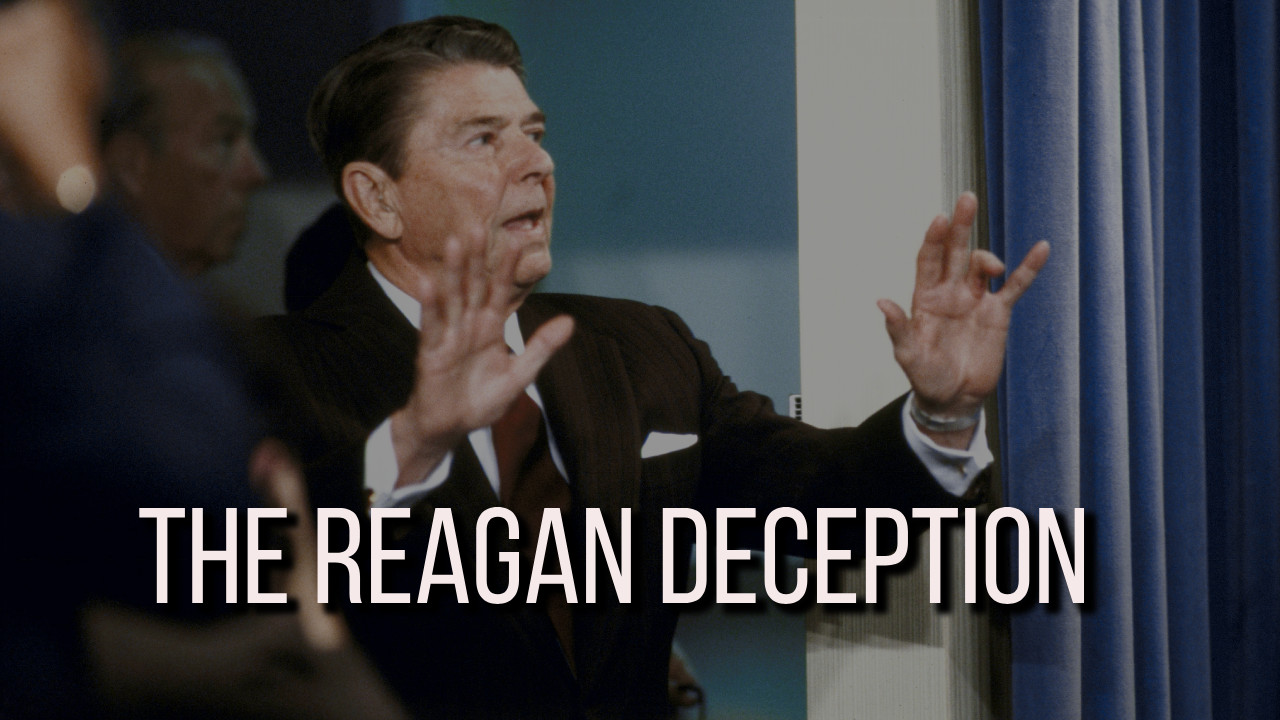
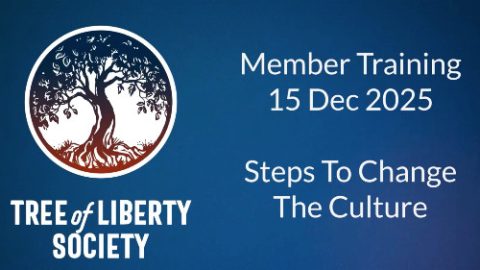
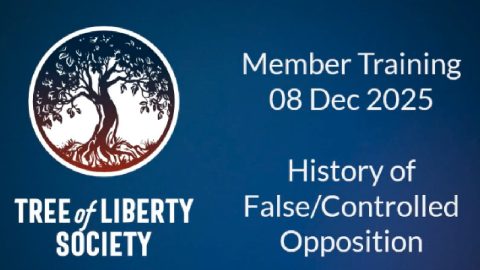
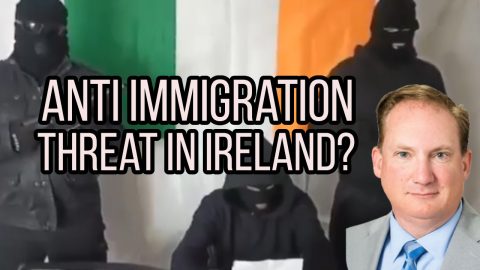
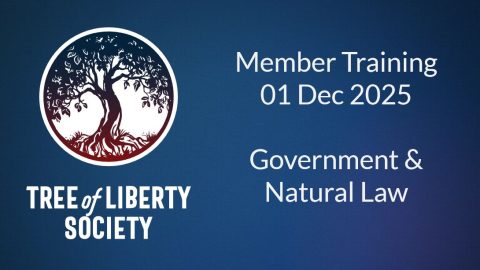



3 Responses
Hope more who sincerely believe in peace and liberty will come to realize that the secret combinations aren’t ever going to allow us to vote them out of power.
Reagan truly was a wolf in sheep’s clothing. I can’t help but think that Trump is doing the same thing. He is now aligning himself with men who are exceedingly questionable. Conservatives are falling for Trump, hook, line, and sinker. So many are looking to Trump to save America. It’s not possible unless America repents and truly turns to God.
Isaiah warns us that we will be taken over by a cruel master because we have not turned to God and repented. America has sold its filth to the whole world and has bullied the nations of the earth for decades. We will reap what we have sewn.
When we follow personalities instead of principles, we will be deceived.